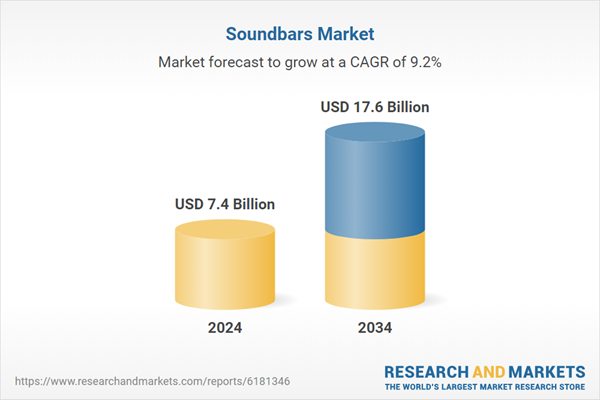The strong growth reflects shifting consumer entertainment habits and the increasing demand for streamlined audio solutions. As more households embrace immersive entertainment at home, compact audio systems that deliver high-quality sound are gaining ground. Soundbars have become a top choice due to their sleek profiles, ease of installation, and ability to provide a cinematic experience without the complexity of traditional setups. The expansion of streaming services continues to elevate expectations for home sound systems, with users seeking audio products that can match the visual clarity of today’s smart TVs. Equipped with cutting-edge technologies, including Dolby Atmos and DTS formats, soundbars are appealing to a wide spectrum of consumers who want advanced sound performance in a minimalistic design. As the need for enhanced audio without bulky setups rises, soundbars are filling the gap with practical, efficient, and aesthetically pleasing alternatives. The category is seeing continued momentum as consumers upgrade their home entertainment systems with compact yet powerful audio products.
In 2024, the 5-channel soundbars segment generated USD 2.6 billion, remaining the market leader due to their capacity to offer rich, multidimensional audio. Their ability to deliver deep, surround-sound experiences makes them ideal for modern home setups. Consumers are increasingly prioritizing smart-enabled features in audio equipment, further accelerating demand. From voice control to wireless operation and smart home integration, these features continue to attract tech-savvy users looking for seamless connectivity and advanced functionality.
The Bluetooth-enabled soundbars segment held a 35.6% share in 2024, highlighting the growing preference for wireless flexibility in audio systems. These soundbars allow users to easily pair with mobile phones, laptops, and other smart devices, simplifying the streaming experience. The trend toward minimalism and wireless ecosystems in home setups has pushed Bluetooth soundbars into mainstream adoption, reflecting a demand for clutter-free, easily accessible audio options.
U.S. Soundbars Market accounted for 78.2% share in 2024, thanks to strong consumer interest in innovative, space-saving audio technologies. The region's focus on premium sound quality, smart integrations, and home automation is driving adoption. With the increasing use of smart TVs and subscription-based streaming platforms, high-performance soundbars are becoming a key component of home entertainment. North America’s robust infrastructure established distribution channels, and a skilled labor force further contributes to scaling production and servicing customer needs effectively.
Key players shaping the Global Soundbars Market include Sony, Yamaha, LG Electronics, Pioneer, Samsung Electronics, Sharp, Devialet, Onkyo, Denon, Bowers and Wilkins, Vizio, Bose, Xiaomi, Sonos, TCL, Harman International, Klipsch, Philips, Panasonic, and Polk Audio. Leading soundbar manufacturers are expanding their product lines with feature-rich, multi-channel systems that support advanced audio formats and integrate easily with smart home ecosystems. Companies are also investing in R&D to enhance audio clarity, reduce latency, and add AI-powered features like adaptive sound modes. Strategic alliances with smart TV and streaming service providers are helping to boost compatibility and expand market reach. To improve user engagement, brands are incorporating intuitive interfaces, mobile app controls, and seamless voice assistant functionality.
Comprehensive Market Analysis and Forecast
- Industry trends, key growth drivers, challenges, future opportunities, and regulatory landscape
- Competitive landscape with Porter’s Five Forces and PESTEL analysis
- Market size, segmentation, and regional forecasts
- In-depth company profiles, business strategies, financial insights, and SWOT analysis
This product will be delivered within 2-4 business days.
Table of Contents
Companies Mentioned
The companies profiled in this Soundbars market report include:- Bose
- Bowers & Wilkins
- Denon
- Devialet
- Harman International (JBL)
- Klipsch
- LG Electronics
- Onkyo
- Panasonic
- Philips
- Pioneer
- Polk Audio
- Samsung Electronics
- Sharp
- Sonos
- Sony
- TCL
- VIZIO
- Xiaomi
- Yamaha
Table Information
| Report Attribute | Details |
|---|---|
| No. of Pages | 170 |
| Published | October 2025 |
| Forecast Period | 2024 - 2034 |
| Estimated Market Value ( USD | $ 7.4 Billion |
| Forecasted Market Value ( USD | $ 17.6 Billion |
| Compound Annual Growth Rate | 9.2% |
| Regions Covered | Global |
| No. of Companies Mentioned | 21 |









